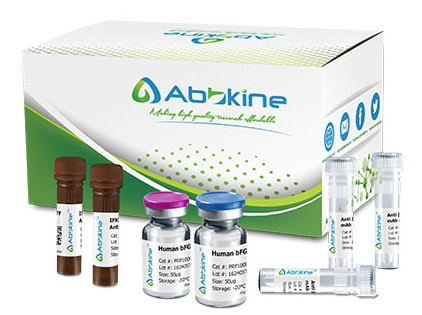Catabolism of histidine begins with the conversion of histidine to urocanic acid by histidase (HAL). UROC1, or urocanase (EC 4.2.1.49), catalyzes the second step in histidine catabolism, the metabolism of urocanic acid to formiminoglutamic acid.Espinos et al. (2009) cloned human UROC1. The deduced protein contains a C-terminal catalytic domain with an evolutionarily conserved catalytic arginine (arg450). UROC1 had an apparent molecular mass of 74.8 kD by SDS-PAGE.Using a spectrophotometric assay, Espinos et al. (2009) demonstrated that purified recombinant UROC1 had robust urocanase activity.Espinos et al. (2009) determined that the UROC1 gene contains 20 exons.
Human Urocanate hydratase (UROC1) ELISA Kit employs a two-site sandwich ELISA to quantitate UROC1 in samples. An antibody specific for UROC1 has been pre-coated onto a microplate. Standards and samples are pipetted into the wells and anyUROC1 present is bound by the immobilized antibody. After removing any unbound substances, a biotin-conjugated antibody specific for UROC1 is added to the wells. After washing, Streptavidin conjugated Horseradish Peroxidase (HRP) is added to the wells. Following a wash to remove any unbound avidin-enzyme reagent, a substrate solution is added to the wells and color develops in proportion to the amount of UROC1 bound in the initial step. The color development is stopped and the intensity of the color is measured.
Human Urocanate hydratase (UROC1) ELISA Kit listed herein is for research use only and is not intended for use in human or clinical diagnosis. Suggested applications of our products are not recommendations to use our products in violation of any patent or as a license. We cannot be responsible for patent infringements or other violations that may occur with the use of this product.
bio-equip.cn




